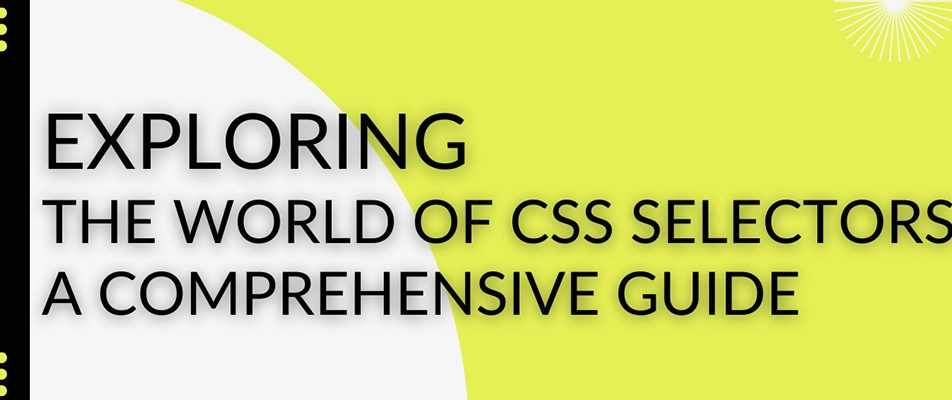Introduction:
CSS (Cascading Style Sheets) is a a stylesheet language ⚙️ that allows web developers🧑🏻💻 to control the appearance of their websites. One of the fundamental concepts in CSS is 📌selectors, which determine which HTML elements🌐 to style. In this blog post💬, we'll take a deep dive into the different types of CSS selectors along with 👩🏻💻code examples to help you better understand how to apply⌨️ styles to specific elements on your web pages💻.
1. Universal Selector (*) - Select All Elements:
The universal selector, denoted by "*", selects all elements on a webpage. While it might seem like a broad approach, it can be useful for applying global styles.
* { margin: 0; padding: 0; } 2. Type Selector - Target Elements by Tag Name:
Type selectors target specific HTML elements based on their tag names. For example, you can style all <h1> elements in a consistent way.
h1 { font-family: 'Arial', sans-serif; font-size: 24px; } 3. Class Selector - Style Elements with Specific Classes:
Class selectors are preceded by a dot (.) and are used to style elements with specific class attributes.
.button { background-color: #007bff; color: white; padding: 10px 20px; } 4. ID Selector - Target Unique Elements:
ID selectors are preceded by a hash (#) and target elements with unique IDs.
#header { background-color: #333; color: white; } 5. Descendant Selector - Style Nested Elements:
Descendant selectors are used to style elements that are descendants of other elements.
article p { line-height: 1.5; } 6. Child Selector - Target Direct Children:
Child selectors target elements that are direct children of a parent element.
ul > li { list-style-type: square; } 7. Adjacent Sibling Selector - Style Immediately Following Elements:
This selector targets an element that directly follows another element.
h2 + p { font-style: italic; } 8. General Sibling Selector - Target Sibling Elements:
The general sibling selector selects elements that share the same parent and are at the same level in the hierarchy.
h2 ~ p { color: #888; } 9. Attribute Selector - Style Elements with Specific Attributes:
Attribute selectors allow you to target elements based on specific attribute values.
input[type="text"] { border: 1px solid #ccc; } 10. Pseudo-Class Selector - Style Elements Based on States:
Pseudo-classes target elements based on their states or interactions.
a:hover { color: #ff9900; text-decoration: underline; } 11. Pseudo-Element Selector - Style Specific Parts of Elements:
Pseudo-elements target specific parts of elements, such as adding content before or after an element's content.
p::before { content: ">>"; font-weight: bold; } 12. Grouping Selector - Apply Styles to Multiple Elements:
Grouping selectors allow you to apply the same styles to multiple selectors.
h1, h2, h3 { font-family: 'Georgia', serif; } 13. Not Selector (:not(selector)) - Exclude Specific Elements:
The :not() pseudo-class excludes elements that match a certain selector.
p:not(.special) { opacity: 0.8; } Conclusion:
Understanding the different types of CSS selectors is essential💯 for effectively styling your web pages🌐. By using these selectors📌 in combination, you can achieve precise and sophisticated styling effects, improving🚀 the overall user experience of your website🌐. Experiment with these selectors and enhance your web design🌊 skills by crafting visually appealing and functional websites💻.



Top comments (0)